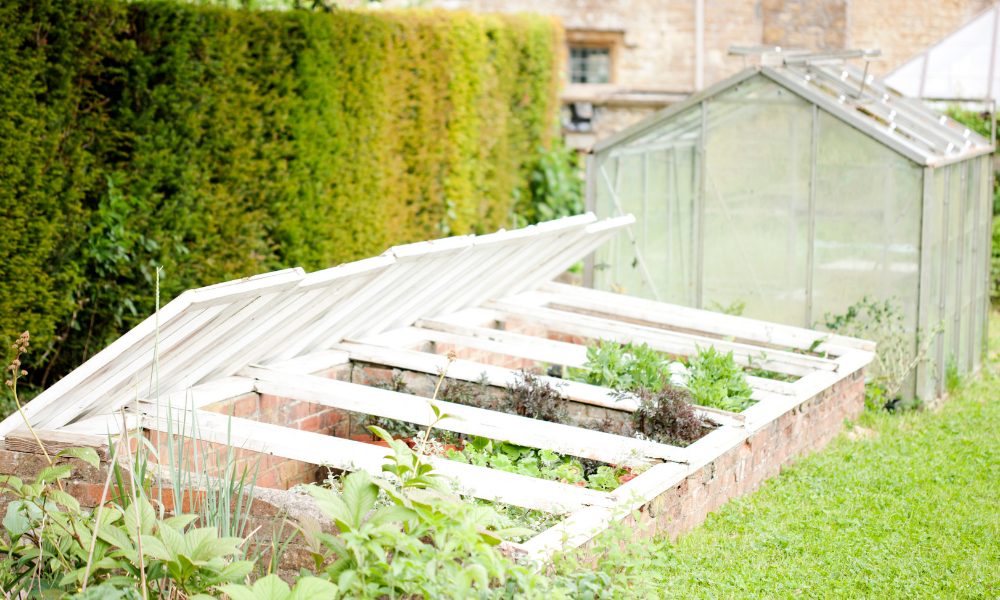Herbs are often associated with warm weather and sunshine, but that’s not the case for every herb.
Some are actually quite cold hardy, like cilantro, thyme, chives, or mint.
By using a cold frame, you can successfully grow the following 6 herbs in the winter outside.
Of course, be aware of which USDA zone you fall in. What works well for folks like me in zone 6 will probably need adjusting in zone 3.
But first…
What is a cold frame?
In its most basic form, a cold frame is a lot like a raised bed, but enclosed with a glass or plastic top. The purpose, of course, is to let the sunshine in while keeping the cold out, so your plants stay cozy and growing throughout winter.
You can learn how we converted our raised bed to a cold frame here.
On a budget? You can put together a very inexpensive cold frame by using bricks as sides and plastic sheeting on top. You can make another really easy cold frame from hay or straw bales as sides and an old window on top.
Chives
When protected properly from the winter chill, like in a cold frame, chives are an easy herb to grow, making great additions to your salads, omelettes, baked potatoes, and more.
Cilantro
Cilantro is great for a cold frame; it is very cold hardy for the fall, since it prefers cooler weather. In the summer, on the other hand, it bolts and seeds out during the summer.
I could always dry cilantro from the summer garden, but I much prefer the taste of fresh cilantro. So it’s my absolute favorite to grow in a cold frame, because I can use it all winter long in my homemade salsa. When I preserve my summer tomatoes, a large portion of them are canned as “crushed.” That means I core, quarter, and leave the peel on the tomatoes, then pulse them in the blender until they are the right consistency for salsa. When I’m craving fresh salsa in the winter, I just add chives (or onion), cilantro, minced garlic, diced jalapenos, and salt to my crushed tomatoes for a delicious salsa that can’t be beat!
Mint
Hardy to zone 3, any variety of mint makes for tasty toppings in creamy desserts like ice cream, or in fruit salads, jellies, and fancy drink recipes. Keep in mind that mint is invasive, so it’s best to grow yours in containers. If planting in your cold frame, sink the potted mint into your soil; don’t plant directly, otherwise the mint will quickly take over.
Oregano
I love oregano, and use it in all my Italian recipes. In the cold months, I like to brew it in tea and drink it hot—it really helps with sore throats. Oregano certainly won’t survive the winter unprotected, so make sure you stick this one in your cold frame.
Parsley
Parsley is an excellent companion herb, balancing out other strongly-flavored herbs in your dishes. Parsley, a biennial herb, produces foliage the first year and flowers the second. It also tends to grow quite wide and shrubby across.
Thyme
Thyme comes in many variations, like lemon thyme and English thyme. Its compact size makes it cold frame-friendly. Thyme is excellent in soups, sauces, and even fresh-baked bread. Mmm… the perfect comfort foods during those cold winter months!
Happy growing—all winter long!


